
ISSN 1859-1531 - THE UNIVERSITY OF DANANG - JOURNAL OF SCIENCE AND TECHNOLOGY, VOL. 22, NO. 11C, 2024 115
TOWARDS CARBON NEUTRALITY IN CONSTRUCTION PROJECTS
BASED ON LIFE CYCLE ASSESSMENT
Nguyen Van Son, Pham Ngoc Thinh*, Le Trung Phong, Bui Le Khanh
Thuyloi University, Hanoi, Vietnam
*Corresponding author: thinhtls@tlu.edu.vn
(Received: September 05, 2024; Revised: September 30, 2024; Accepted: October 15, 2024)
DOI: 10.31130/ud-jst.2024.568ET
Abstract - The construction industry is among the largest global
consumers of natural resources and contributors to greenhouse gas
emissions. This paper aims to evaluate current environmental
standards and propose a new framework for reducing greenhouse gas
emissions, targeting carbon neutrality in construction projects. The
study employs the Life Cycle Assessment (LCA) methodology to
assess the environmental impacts of civil buildings throughout their
lifecycle, including material production, construction, operation, and
disposal. Data were obtained from the IMPRO-Building project,
which analyzed 72 building samples across three distinct climate
zones in Europe. The findings indicate that high-rise buildings
demonstrate greater energy efficiency compared to single-storey and
multi-storey structures. Furthermore, climatic conditions
significantly influence energy consumption, with cold climates
exhibiting higher energy demands. The study recommends adopting
LCA-based standards to mitigate environmental impacts, thereby
promoting the sustainable development of the construction industry.
Key words - Carbon neutrality; Life cycle analysis; Residential
buildings; Greenhouse gas emission potential; Primary energy
consumption
1. Introduction
The construction industry is one of the largest resource-
consuming sectors and a major contributor to global
greenhouse gas emissions. While it accounts for
approximately 23% of global energy consumption 17%
from residential buildings and 6% from service buildings -
the direct and indirect CO2 emissions associated with
energy use and operational activities in this sector have
reached approximately 0.4 Gt CO2, representing 38% of
total global emissions. Additionally, the production of
building materials contributes about 11% of global
greenhouse gas emissions [1]. Given the escalating climate
crisis, reducing emissions and improving resource
efficiency within the construction sector has become
imperative. The transition toward carbon-neutral buildings
is not only an inevitable necessity but also a crucial long-
term strategy for ensuring the sustainable development of
the global environment.
Figure 1. Energy consumption and emissions of buildings
Currently, standards such as LOTUS (Vietnam), LEED
(USA), HQE (France), and BREEAM (UK) offer
frameworks for assessing and enhancing the energy
performance of buildings. However, these systems primarily
focus on the operational phase, while the environmental
impacts associated with the full life cycle of building
materials and structures remain insufficiently addressed.
This highlights the urgent need for the development of new
environmental standards that encompass the entire life cycle
of buildings - from resource extraction, production, and
construction, to operation and disposal.
In Vietnam, nearly 500 buildings and structures,
covering a total area of approximately 11.5 million m²,
have attained green certifications, with EDGE accounting
for 44% of the projects, LEED for 37%, and Green Mark
for 11%. Each certification type entails varying levels of
criteria and requirements. Depending on the function and
scale of the project, costs can increase by 1-3%, and in
some cases, by 5-6%, when adhering to higher-level LEED
criteria. The application of standards that are tailored to
specific climate conditions and construction methods
contributes to cost reduction and facilitates progress
toward carbon neutrality [2].
This paper aims to evaluate existing environmental
standards in the construction industry and propose new
indicators to guide buildings toward carbon neutrality. The
research focuses on developing a standard system based on
the Life Cycle Assessment (LCA) method [3], with the
goal of minimizing the environmental impact of buildings.
By employing the LCA method, the study identifies key
environmental indicators and establishes standards that are
applicable to the construction industry in the long term,
ensuring sustainable development and reducing ecological
footprints.
This study contributes to the development of a new
framework for assessing the environmental performance of
buildings, with the ultimate goal of achieving carbon
neutrality. Specifically, the paper proposes the application
of tailored standards to various building types, ranging
from single-family homes to high-rise structures. These
indicators are derived from data collected through the
IMPRO-Building project and include a comparative
analysis across different climatic zones in Europe. The
study offers recommendations for the establishment of
environmental standards in sustainable design and
construction, aiming to reduce the environmental impact of
the construction industry.

116 Nguyen Van Son, Pham Ngoc Thinh, Le Trung Phong, Bui Le Khanh
2. Data and Research Methodology
This study employs the Life Cycle Assessment (LCA)
method to comprehensively evaluate the environmental
impacts of civil buildings across their entire life cycle, from
raw material production and construction to usage and end-
of-life disposal. LCA serves as a tool to quantify these
environmental impacts, facilitating the development of
environmental standards aimed at achieving carbon
neutrality in construction projects.
The scope of the LCA in this study focuses on the
structural systems of buildings, including construction
materials such as concrete, steel, and wood. The life cycle of
a building is divided into distinct stages: material production
(A1-A3), construction, operation (B1-B5), and
decommissioning (C1-C4). The application of the LCA
method enables a clearer identification of the factors that have
the most significant impact on greenhouse gas emissions and
energy consumption in civil buildings (Figure 2).
Figure 2. Stages in the life cycle of a building
The data for this study were sourced from the IMPRO-
Building project [4], a European research initiative aimed at
exploring the environmental improvement potential of
residential buildings within the EU-25. The project's database
comprises 72 residential building samples, including 31
single-family houses (SI), 32 multi-family buildings (MF),
and 9 high-rise buildings (HR). These samples are categorized
into three primary European climatic zones: Z1 (Southern
European countries), Z2 (Central European countries), and Z3
(Nordic European countries).
Table 1. Number of projects and types of projects
Zone
Single family
home
Multi-storey
house
High-rise
building
existing
new
existing
new
existing
new
Z1
8
3
8
3
2
1
Z2
8
3
8
3
2
1
Z3
7
2
8
2
2
1
Total
31
32
9
The collected data includes key metrics such as
Global Warming Potential (GWP), which measures the
potential greenhouse gas emissions over the life cycle of
a building (in kg CO2 equivalent), and Primary Energy
(PE), which refers to the total energy consumed. PE is
further divided into two categories: embodied impacts
(material impacts) and operational impacts. These data
are normalized by building area (in m² per year) to
enable meaningful comparisons across different
building types and climate zones.
The analytical approach primarily employs descriptive
statistics and comparative analysis to establish standard
environmental indicators for various building types.
Specifically, mean values, variances, and standard deviations
are calculated for each building group (single-family, multi-
family, and high-rise) across the three climate zones.
3. Results and discussion
This study analyzes three main building types: single-
family houses, multi-family buildings, and high-rise
buildings. The analysis results are presented based on two
key criteria: Global Warming Potential (GWP) and
Primary Energy consumption (PE), both calculated over
the entire life cycle of the buildings. These results are
provided for the three corresponding climatic zones: Z1
(Southern European countries), Z2 (Central European
countries), and Z3 (Nordic European countries).
Table 2. GWP and PE calculation results for area Z1
Generic
Index
Medium
Standard
Single family
home
GWP
9.87
9.32
PE
162.12
154
Multi-storey house
GWP
8.62
8.06
PE
124.58
112.45
High-rise building
GWP
7.51
6.21
PE
100.86
82.25
Table 3. GWP and PE calculation results for area Z2
Generic
Index
Medium
Standard
Single family
home
GWP
6.77
7.4
PE
134.65
131.83
Multi-storey
house
GWP
7.28
7.26
PE
112.53
105.25
High-rise building
GWP
6.17
6.57
PE
83.86
88.89
Table 4. GWP and PE calculation results for area Z3
Generic
Index
Medium
Standard
Single family
home
GWP
9.17
8.94
PE
180
133.89
Multi-storey house
GWP
7.69
8.07
PE
124.82
116.86
High-rise building
GWP
6.17
6.57
PE
84.36
88.91
The analysis results reveal significant variations in
environmental impacts across the three building types.
Single-family homes exhibit the highest average GWP and
PE values, primarily due to their larger area and higher
resource demands. Factors such as low building density and
large surface-to-volume ratios contribute to substantial
energy consumption, particularly for heating and operational
needs. Multi-family buildings, while demonstrating lower
GWP values compared to single-family homes, still exhibit
higher environmental impacts than high-rise buildings. This
reflects an intermediate level of resource use and operational
energy consumption per unit area. Notably, high-rise
buildings display superior resource efficiency, with the
lowest GWP and PE values. This efficiency is largely
attributed to optimized space utilization and shared
resources between units, which significantly reduces energy
consumption and greenhouse gas emissions per unit area.
These findings provide a critical foundation for evaluating

ISSN 1859-1531 - THE UNIVERSITY OF DANANG - JOURNAL OF SCIENCE AND TECHNOLOGY, VOL. 22, NO. 11C, 2024 117
and selecting sustainable construction solutions in the
context of growing urbanization.
Figure 3. Correlation between PE and GWP index
The study results indicate that climatic conditions play
a critical role in determining the energy efficiency of
buildings. Notably, buildings located in the cold climate
zone (Z3) exhibit significantly higher PE values compared
to those in other zones, primarily due to increased energy
demands for heating during colder seasons. While existing
standards, such as LEED [5] and LOTUS [6],
predominantly assess energy consumption during the
operational phase of a building, this study adopts a more
comprehensive approach by applying Life Cycle
Assessment (LCA). This method evaluates the entire life
cycle of a building, including stages such as material
production and post-life disposal.
Figure 4. Comparison of LOTUS and LEED standards [7]
Systems such as LEED and LOTUS often overlook the
environmental impact of building materials and fail to
account for factors such as energy consumption during the
production and transportation of these materials, despite
the fact that these stages can significantly contribute to a
building's overall greenhouse gas emissions. The findings
of this study highlight the importance of assessing non-
operational factors, including material production and end-
of-life disposal, as essential components for achieving
comprehensive carbon neutrality goals.
The carbon neutrality of buildings is influenced not
only by construction materials but also by several key
factors, including climate zone, building type, and
operational energy use.
Climatic zones: In colder climates, such as Z3
(Northern Europe), energy demand for heating is
significantly higher, resulting in elevated Primary Energy
(PE) values. This necessitates the implementation of more
stringent energy efficiency measures in design and energy
management, such as enhanced insulation and the
integration of renewable energy sources.
Building type: Different building types exhibit varying
environmental impacts. Single-family homes typically
have higher GWP and PE values compared to multi-story
and high-rise buildings due to their lower density and
larger footprint. In contrast, high-rise buildings benefit
from shared resources and infrastructure across multiple
floors, enhancing their potential for carbon neutrality.
Operational energy use: Buildings designed with
energy-saving features, such as natural ventilation, solar
energy systems, or smart energy management
technologies, are more likely to achieve carbon neutrality
through reduced operational energy consumption.
4. Conclusion
This study utilized a Life Cycle Assessment (LCA)
approach to evaluate the environmental impact of carbon-
neutral buildings. The findings indicate that high-rise buildings
have the potential to utilize resources more efficiently than
single-family and multi-storey buildings, particularly in the
context of increasing urbanization. Additionally, climatic
conditions play a critical role in determining energy
consumption, with cold climates exhibiting significantly
higher energy demands. Consequently, the development of
sustainable construction standards must encompass the entire
life cycle of a building - from raw material extraction to end-
of-life disposal - rather than focusing solely on the operational
phase, as many current rating systems do.
Selecting appropriate assessment criteria not only helps
reduce costs but also contributes to broader sustainable
development goals. In the context of Vietnam, the
application of the LOTUS assessment criteria may be
considered as a viable option.
REFERENCES
[1] IEA, “World Energy Outlook 2021”, International Energy Agency,
2021. [Online]. Available: https://www.iea.org/reports/world-
energy-outlook-2021 [Accessed Sept. 05, 2024].
[2] N. Hien, “Green construction becomes mandatory standard”,
Tuoitre.vn, September 04, 2024. [Online]. Available:
https://tuoitre.vn/cong-trinh-xanh-thanh-tieu-chuan-bat-buoc-
20240904082741091.htm [Accessed Sept. 04, 2024].
[3] H. Gervasio and S. Dimova, Model for Life Cycle Assessment (LCA) of
buildings, EUR 29123 EN, Publications Office of the European Union,
2018, ISBN 978-92-79-79974-7 (print); 978-92-79-79973-0 (pdf),
doi:10.2760/10016 (online), 10.2760/789069 (print), JRC110082.
[4] F. Nemry et al., Environmental Improvement Potentials of
Residential Buildings (IMPRO-Building), EUR 23493 EN, Office
for Official Publications of the European Communities, 2008,
doi:10.2791/38942.
[5] D. H. Pham, J. Lee, and Y. Ahn, “Implementing LEED v4 BD+C
projects in Vietnam: Contributions and challenges for general
contractor”, Sustainability, vol. 11, p. 5449, 2019.
[6] Vietnam Green Building Council, Vietnam Green Building Update,
Vietnam Green Building Council, 2020. [Online]. Available:
https://vgbc.vn/en/vietnamgreen-building-update/ [Accessed June
21, 2023].
[7] Vietnam Green Building Council, "LEED, LOTUS & EDGE
Comparison", Vietnam Green Building Council, 2018. [Online].
Available: https://vgbc.vn/wp-content/uploads/2018/12/01-LEED-
LOTUS-EDGE-Comparison-v2.pdf [Accessed June 21, 2023].
0 50 100 150 200
GWP
PE
GWP
PE
GWP
PE
Single
family home
Multi-storey
house
High-rise
building
Z3 Z2 Z1



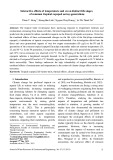

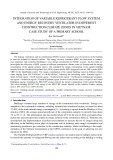
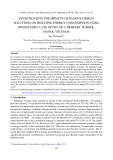
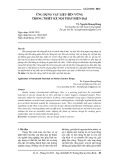
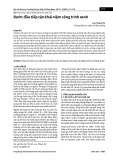





![Bài giảng Quản lý vận hành và bảo trì công trình xây dựng [chuẩn nhất]](https://cdn.tailieu.vn/images/document/thumbnail/2025/20251006/agonars97/135x160/30881759736164.jpg)









![Ngân hàng câu hỏi trắc nghiệm Sức bền vật liệu 1: [Mô tả/Định tính Thêm để Tăng CTR]](https://cdn.tailieu.vn/images/document/thumbnail/2025/20250920/kimphuong1001/135x160/6851758357416.jpg)

